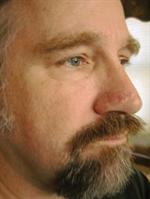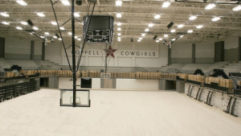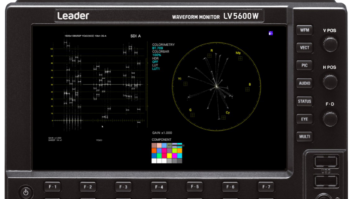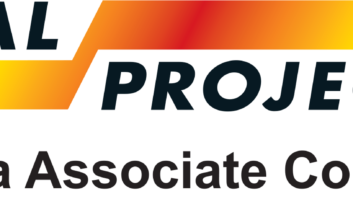

David Gunness, Fulcrum Acoustic, on Speakers
David Gunness is co-owner and chief technical officer for audio start-up Fulcrum Acoustic. Previously he spent 11 years at Electro-Voice and 12 years at Eastern Acoustic Works. Gunness was responsible for many of EAW’s lead product designs, including the EAW KF900 Series, plus the MQ, DSA, and NT Series.
Sam: Is there a difference in the design process between a small start-up versus an established company?Sam: We both share an interest in system measurement and setup. I believe system tuning is becoming almost more important than the actual loudspeaker selection, given a good design. Agree, or disagree?
Quick bio: David Gunness is co-owner and chief technical officer for audio start-up Fulcrum Acoustic. Previously he spent 11 years at Electro-Voice and 12 years at Eastern Acoustic Works. Gunness was responsible for many of EAW’s lead product designs, including the EAW KF900 Series, plus the MQ, DSA, and NT Series.
David Gunness, Fulcrum Acoustic
Gunness: Our product development process at Fulcrum is very, very fast; and that keeps it fun. It’s a real luxury to finish a project while it still feels fresh and exciting. And it makes it very easy to keep the creative juices flowing.
Sam: You’re well known for using DSP to aim and resolve issues with loudspeaker arraying. Do you still see DSP as a useful tool, and how much control over it do you give users?
Gunness: I don’t consider DSP and loudspeaker design to be separate things. Loudspeaker design is a game of compromises, but in the past year, I discovered a number of physical attributes that I was able to improve by sacrificing a competing attribute-but only because I knew I could fix the new problem with DSP.
System tuning–using EQ after the product is installed–and loudspeaker design are separate things, however. There are DSP filters that constitute part of the loudspeaker design and DSP filters that are part of a system tuning. It is almost never productive to try to redesign a loudspeaker in situ. I believe in locking down any parameter that could ruin the directional behavior if it were changed. DSP has allowed me to alter and optimize the directional behavior of loudspeakers in many different types of designs.
Sam: With self-powered speakers becoming a larger part of the market, DSP is being deployed in the built-in amplifiers of many loudspeakers. Does this provide an opportunity for you? Do you see this as a good trend or dangerous one?
Gunness: As a loudspeaker manufacturer, it’s always difficult to ensure optimum system results when a large part of the system is provided by somebody else. There are no standards defining DSP filter response, and every amplifier manufacturer seems to have its own unique protocol for setting and specifying amplifier gain. Consequently, the person setting up a system typically must conduct an unreasonable amount of research and be unusually meticulous, just to get the results the loudspeaker designer intended. Which is to say, most loudspeaker systems do not work the way their designers intended.
Self-powered systems eliminate many of those problems, so they’re a luxury for a loudspeaker designer. However, there are a large number of applications that favor external processing and amplification, so self-powered loudspeakers shouldn’t be the only solution.
Sam Berkow
Gunness: A mediocre loudspeaker tuned well will sound much better than a good loudspeaker tuned poorly. So I guess I agree, to that extent. However, a truly special loudspeaker tuned very well can achieve things that no amount of tuning can achieve with a run-of-the-mill loudspeaker. In short, I don’t expect loudspeakers to become commodities any time soon.
Sam: Your newest line of products feature co-axial loudspeakers, an old idea redeployed. Why?
Gunness: My first project as a professional speaker designer was a coax–the Musicaster 100. Since then, I’ve designed about a dozen others and I encountered the same set of problems in all of them.
In the last couple years, I started to realize that some of those problems were not as intractable as I once thought. The key is what I’ve been talking about: You have to let go of the idea of a smooth, musical-sounding axial response, and just try to make it sound the same everywhere. Then, when you fix up the axial response with DSP, it fixes it up everywhere. I have returned to the co-axial design, which when coupled with carefully applied DSP, can result in some very special things.
Sam: How important is working with consultants and users when you define your new products?
Gunness: It’s the life blood of innovation. It’s much easier to create fresh new designs when you have fresh input from the field. With a constant flow of new information, you don’t have to worry about designing the same thing over and over again.
Sam: Have you really eaten squirrel?
Gunness: Yes, a raw squirrel. It really happened. It was the first game I ever brought home. My mother put it in a pan with sautéed vegetables and then left for work without telling me how to finish the job. I thought it was ready to eat. As a principled hunter, I felt very guilty that I couldn’t finish it.
Sam Berkow is the founding partner of SIA Acoustics, an acoustical design firm.









